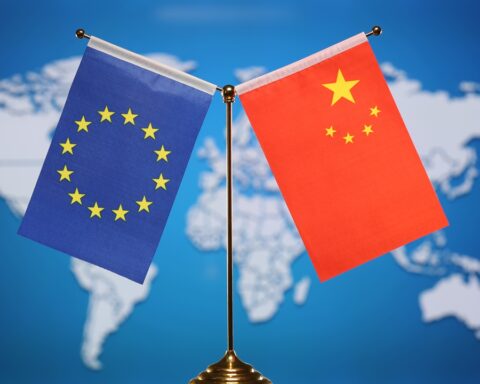The transatlantic relationship, long hailed as the backbone of the global trading system, is once again under strain. President Donald Trump’s latest tariff threat against the European Union (EU) suggests that the specter of a renewed EU-US trade war looms large, underscoring unresolved tensions over industrial policy, subsidies, and economic strategy.
While the U.S. and EU had sought to reset trade ties in recent years, Trump’s rhetoric and policy leanings point to a revival of the disputes that shook markets during his first term—this time potentially with broader implications for global supply chains and geopolitical alignments.
A Flashback to 2018: The Trade War That Shook Allies
During Trump’s presidency, Washington and Brussels clashed bitterly over tariffs on steel, aluminum, and agricultural goods. The U.S. imposed sweeping duties on European metals, citing national security, while the EU retaliated with levies on iconic American products ranging from bourbon whiskey to Harley-Davidson motorcycles.
The result was a tit-for-tat escalation that strained transatlantic ties, disrupted markets, and created uncertainty for companies operating on both sides of the Atlantic. Although a truce was brokered under the Biden administration—suspending some tariffs and seeking negotiation—the fundamental disagreements never disappeared.
Trump’s New Threat: A Warning Shot at Europe
Trump’s new remarks on tariffs suggest he views Europe not just as an ally, but also as a trade rival exploiting U.S. markets. He has specifically criticized Europe’s subsidies for green industries, such as electric vehicles (EVs) and renewable energy, claiming they give European firms an unfair edge.
“If Europe wants to play games with subsidies, America will play harder,” Trump reportedly said, framing tariffs as both a defensive tool and a bargaining chip.
The threat comes at a sensitive moment. European leaders, already wary of U.S. protectionism under the Inflation Reduction Act (IRA), fear that escalating tensions could fracture coordination on key global challenges—from climate change to China’s rising influence in trade.
Underlying Fault Lines: Subsidies, Energy, and Tech
Several structural issues underpin the renewed friction:
- Green Subsidies: The U.S. IRA provides hundreds of billions of dollars in tax credits for domestic EV and clean energy production. Europe sees this as protectionist. Trump’s criticism of EU subsidies could deepen the subsidy race.
- Energy Policy: U.S. energy exports, particularly liquefied natural gas (LNG), have surged to Europe since Russia’s war in Ukraine. But disagreements over pricing and long-term contracts could flare up into trade disputes.
- Tech and Digital Taxes: European efforts to impose digital service taxes on American tech giants have long irked Washington. Tariffs could re-emerge as a retaliatory response.
- Agriculture: U.S. demands for broader access to European agricultural markets remain unresolved, with Trump historically framing Europe’s food standards as unfair barriers.
The Stakes for Global Markets
A renewed EU-US trade war would ripple far beyond Washington and Brussels.
- For Businesses: Companies like Airbus, BMW, Caterpillar, and Ford could face higher costs, disrupted supply chains, and shifting investment strategies.
- For Consumers: Tariffs often translate into higher prices for everything from wine to cars to household goods, effectively acting as a hidden tax on consumers.
- For Global Trade: With China already at the center of a separate trade confrontation, an EU-US rift risks fragmenting global trade into competing blocs.
Financial markets have historically reacted sharply to tariff announcements, and analysts warn that another round of disputes could weigh on investor confidence at a delicate time for the global economy.
European Response: Defiance, Not Submission
European leaders are unlikely to bow to Trump’s threats without retaliation. The EU has already demonstrated its willingness to counter U.S. tariffs dollar-for-dollar, and its unified trade policy gives it significant leverage.
Brussels has also been deepening ties with other partners—including Canada, Japan, and India—as part of a strategy to diversify away from overreliance on the U.S. market. At the same time, the EU is positioning itself as a regulatory superpower in areas such as digital governance and climate policy, where it believes it can set global standards despite U.S. resistance.
Could Diplomacy Prevail?
Despite the confrontational tone, there remains room for negotiation. Past trade spats have often ended in compromise, with both sides recognizing the high costs of prolonged conflict.
Analysts suggest that a potential off-ramp could involve new agreements on subsidies, carbon tariffs, and technology standards. However, the political dynamics on both sides of the Atlantic—marked by elections, populist pressures, and economic headwinds—make it difficult for leaders to be seen as making concessions.
Conclusion: A Trade Relationship at a Crossroads
Trump’s renewed tariff threat underscores that the EU-US trade war was never truly resolved—it was merely paused. With old grievances resurfacing and new industrial rivalries emerging, the transatlantic alliance faces yet another test of resilience.
Whether diplomacy can bridge the divide or whether tariffs will once again dominate headlines remains uncertain. But one thing is clear: the stability of the global trading system may hinge on whether Washington and Brussels choose confrontation or cooperation in the months ahead.























